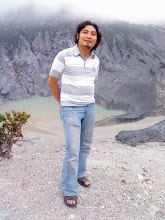Macrobenthic assemblages are relatively poorly known compared to other components of the mangrove ecosystem. Tropical mangroves support macrobenthic biodiversity resources yet to be properly documented and interpreted. Some methodological challenges, such as the generally high spatial heterogeneity and complexity of the habitat, evidently reduce sampling efficiency and accuracy, while also leaving some microhabitats under-sampled. Macrobenthic assemblage structure seems to be influenced by local environmental conditions, such as hydroperiod, organic matter availability and sediment characteristics. Brachyurans, gastropods and oligochaetes dominate in the sediment, with the former two groups also common on hard surfaces provided by tree trunks, while insects and arachnids inhabit the canopy. Traditionally, studies of mangrove macrobenthos have focused on assemblage structure or the biology of individual species, but more complex inter-specific interactions and the inter-relationship between habitat and the biota are recently being addressed. Brachyuran crabs are the best-studied macrobenthos group, but many
issues about their role in mangrove ecosystem dynamics are still controversial. Despite many species of mangrove macrobenthos being referred to as ‘trophic dead ends’, most serve as important links between recalcitrant mangrove organic matter and estuarine secondary production, through feeding excursion by mobile nekton during the high tide, and macrobenthos-mediated processing and exportation of organic matter. A significant difference in the standing crop biomass of forests between the Indo-west-Pacific (IWP)' and Atlantic-east-Pacific (AEP) mangroves may be related to the difference in species richness of mangrove as well as macrobenthos diversity in the two bioregions. Such differences in assemblage structure may also result in different ecosystem functioning, but the nature of the links is, however, yet to be explored. There is also a strong need for evaluating mangrove macrobenthos assemblages as a component of the connected biotic resources in the land-sea continuum, rather than as an isolated faunal group.
issues about their role in mangrove ecosystem dynamics are still controversial. Despite many species of mangrove macrobenthos being referred to as ‘trophic dead ends’, most serve as important links between recalcitrant mangrove organic matter and estuarine secondary production, through feeding excursion by mobile nekton during the high tide, and macrobenthos-mediated processing and exportation of organic matter. A significant difference in the standing crop biomass of forests between the Indo-west-Pacific (IWP)' and Atlantic-east-Pacific (AEP) mangroves may be related to the difference in species richness of mangrove as well as macrobenthos diversity in the two bioregions. Such differences in assemblage structure may also result in different ecosystem functioning, but the nature of the links is, however, yet to be explored. There is also a strong need for evaluating mangrove macrobenthos assemblages as a component of the connected biotic resources in the land-sea continuum, rather than as an isolated faunal group.


